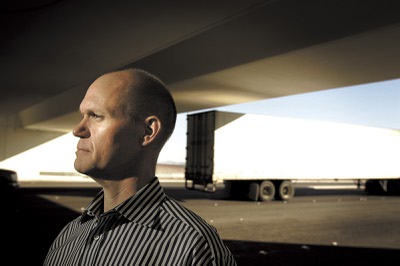Sun Coverage
Government leaders have to change their mindset about how transportation projects are developed, planning more regional development and less by states, a leading transportation consultant says.
Tom Skancke, president of The Skancke Co. Ltd., on Thursday told members of NAIOP, the Southern Nevada chapter of the Commercial Real Estate Development Assn., that the solution to building highways and high-speed rail systems lies in the formation of regional planning organizations so roads and rail lines are built to serve a broad area and not in unconnected pieces.
Skancke followed his own mantra last year when he helped form the Western High-Speed Rail Alliance, a collection of planning agencies in Nevada, Utah, Arizona and Colorado that are working to develop a high-speed rail network in the Southwest.
He warned that developing transportation systems won't be cheap and that government entities must begin working toward building long-term stable funding sources to develop the necessary infrastructure -- a proposal that chafed the NAIOP group, which has advocated against tax increases.
"Our Legislature has got to wake up and realize that the state highway trust fund and the federal highway trust fund cannot build this infrastructure," Skancke said.
Long a supporter of adding 5 cents a gallon to existing federal gasoline taxes, Skancke also suggested that the government start applying existing technology -- a simple GPS system -- to develop user fees on highways based on the number of vehicle miles traveled. Charges based on use are commonplace on utility and cell-phone bills, he said.
Under such a plan, a GPS system would monitor the number of miles traveled by a vehicle and charge a fee accordingly. Skancke said it would make sense to charge more during rush hours to develop incentives for businesses to change work schedules to decrease congestion.
"It provides incentives for businesses to shift the time clock," he said. "If you work 8 to 5, you're going to be stuck in congestion. But if you work 7 to 3, you're not going to pay that higher price. You now start giving businesses the incentive to start changing their shifts."
Skancke also reiterated a concern on Southern Nevada's horizon should California's state government move toward mandating the use of electrically powered cars. He predicts that in the next five to seven years, more laws will be passed in California for incentives restricting the use of fossil-fuel-powered vehicles. As a result, more electric cars will be on the road -- and Las Vegas isn't ready for that.
"We don't have a place for them to plug in," Skancke said. "The hotels aren't prepared for this. We don't have a vehicle-miles-traveled mechanism to collect their energy tax. So when they come here and 120,000 people plug in on Friday afternoon at 8 o'clock, we don't have a power grid to handle that. If you think we have rolling brownouts now, wait until 140,000 people plug in in Las Vegas when it's 118 degrees outside."
Other highlights from Skancke's NAIOP presentation:
* Efforts to develop Interstate 11, a proposal he advocates that would build a four-lane freeway between Phoenix and Las Vegas to interstate standards continues to progress. Private developers in Arizona have committed $100 million worth of right-of-way west of Phoenix to the project, he said. A long-term vision of I-11 would extend the highway northwest from Las Vegas all the way to Seattle.
* Investment in transportation infrastructure is a huge economic stimulus. The Federal Highway Administration recently said that every $1 billion invested in transportation projects translates into the direct and indirect creation of 37,500 jobs, he said.
* Southern Nevada needs to investigate how to develop an inland port, a proposal Skancke believes could result in thousands of jobs. He has envisioned such a facility south of Las Vegas near the site of the proposed Ivanpah Valley airport. Yuma, Ariz., is considering an inland port in conjunction with the planned China-backed Punta Colonet port in Baja California that would bring Asian goods to North America via Mexico.


Join the Discussion:
Check this out for a full explanation of our conversion to the LiveFyre commenting system and instructions on how to sign up for an account.
Full comments policy